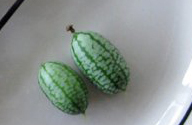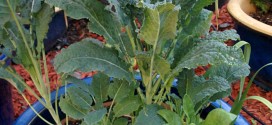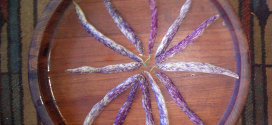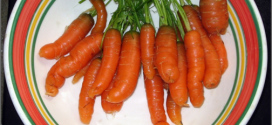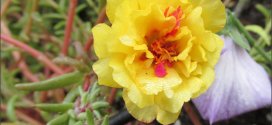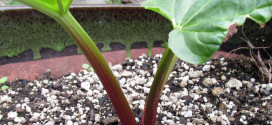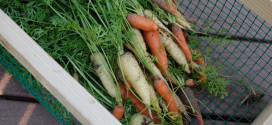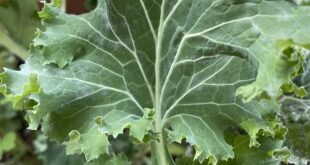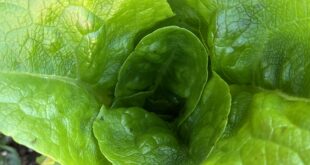Melothria scabra is a vine grown for its edible fruit. Fruit are about the size of grapes and taste like cucumbers with a tinge of sourness. Vernacular names include mouse melon, Mexican sour gherkin, cucamelon, Mexican miniature watermelon and Mexican sour cucumber. This plant is native to Mexico and Central America,[1] where it is called sandiita (little watermelon). It is …
Read More »Vegetables
Kale – Nero Toscano
Cold-hardy and resilient, kale is an easy member of the cabbage family to grow. In Sunnyvale (USDA Zone 9) plant the seeds in November (right before the winter rains). You can set out plants quite early in spring as long as you protect the young plants from severe cold winds with a cover. They will grow steadily for months until …
Read More »Zucchini
Growing zucchini (Cucurbita pepo) in a garden is very easy and a zucchini plant can produce large amounts of delicious squash. How to Plant Zucchini When planting zucchini, you can plant them either as individual plants or grouped on hills. How you grow zucchini squash is up to you, based on how many zucchini plants you intend to grow and …
Read More »Dragon Tongue Bean
Dragon Tongue is a great bean for the Sunnyvale garden. It is a bush bean, 24-30 inches tall. It is a great in a container. Lots of beans in 60 days. It’s suited to use as a fresh snap bean or as a shelled bean when fully mature. As a snap, harvest when the flat beans turn from lime green …
Read More »Carrots
The carrots you find at the grocer require 10-12 inches deep of loose soil, othewise they grow stunted. Your standard ground soil in Sunnyvale is clay. The solution is to select one of many varieties that are shorter. ‘Nantes’ is about 7 inches long. ‘Thumbelina’ is 4 inches long.
Read More »Purslane
Common in our Sunnyvale yards but little known in the North American kitchen, purslane is both delicious and exceptionally nutritious. Common purslane (Portulaca oleracea) — also known as duckweed, fatweed, pursley, pussley, verdolagas and wild portulaca — is the most frequently reported “weed” species in the world. It can grow anywhere that has at least a two-month growing season. My …
Read More »Rhubarb
Rhubarb is a perennial vegetable that grows well in most of the United States. Rhubarb is used in pies, tarts and sauces. Rhubarb should be planted at the end of one side of the garden where it will not be disturbed since it may be productive for five years or more. A half-dozen plants will provide enough rhubarb for a …
Read More »Carrots – Circus Circus
This trio of colored carrots are creamy white, bright orange, and a deep, dark purple with orange centers. All three are crisp, smooth and evenly cylindral, growing to 8 inches long for a colorful harvest of festive roots. Their flavor is reliably sweet with a nice crunchy texture and you’ll enjoy this mix over a long season. Cut all three …
Read More »Kale
Cold-hardy and resilient, kale is an easy member of the cabbage family to grow. You can set out plants quite early in spring as long as you protect the young plants from severe cold winds with a cover. They will grow steadily for months until the weather gets too warm. You’ll get a second chance to plant kale in the …
Read More »Bibb Lettuce
Bibb type lettuces are known for their ‘buttery’ taste and velvety texture, and small loosely formed heads. Relative to most other lettuce types, Bibbs are slightly more tolerant of heat. Even so, they are best planted early or late in the season in spring, away from the intense summer sun. They may be started indoors several weeks prior to the …
Read More »